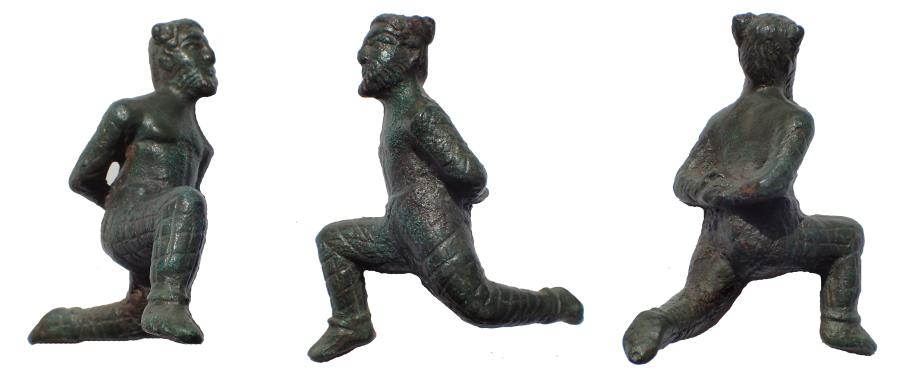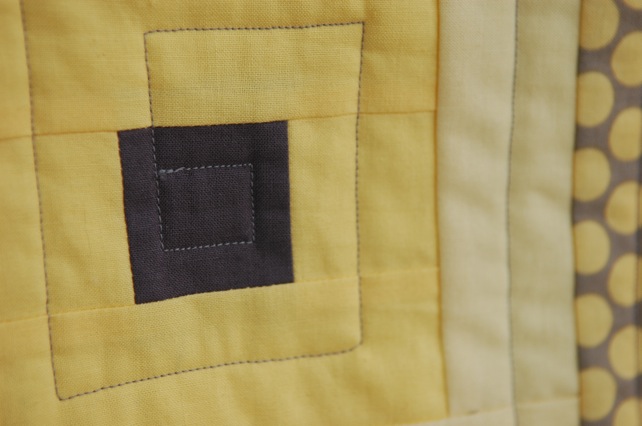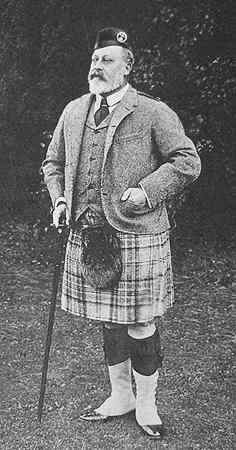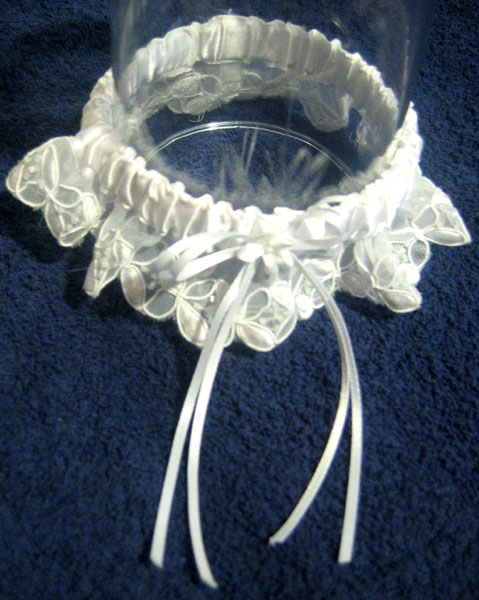|
Trews
Trews (or truis, ) are men's clothing for the legs and lower abdomen, a traditional form of tartan trousers from Scottish Highland dress. Trews could be trimmed with leather, usually buckskin, especially on the inner leg to prevent wear from riding on a horse. Tartan trews shared the fate of other items of Highland dress under the proscription of the Dress Act 1746, which banned men and boys from wearing the truis ("trowse") outside of military service. The Dress Act 1746 lasted until 1782 when it was repealed under the reign of King George III. Origins Trews appear to date to at least as early as Roman Britain. The triumphal arch of Volubilis completed in 217 AD once featured a bronze statue of Roman Emperor Caracalla; the only surviving fragment of the statue depicts a Caledonian Pictish prisoner wearing tartan trews. It was carved then inlaid with bronze and silver alloys to give a variegated appearance. Written records of tartan trews date back to 1538, as a style ... [...More Info...] [...Related Items...] OR: [Wikipedia] [Google] [Baidu] |
Trousers
Trousers (British English), slacks, or pants ( American, Canadian and Australian English) are an item of clothing worn from the waist to anywhere between the knees and the ankles, covering both legs separately (rather than with cloth extending across both legs as in robes, skirts, dresses and kilts). Shorts are similar to trousers, but with legs that come down only as far as the knee, but may be considerably shorter depending on the style of the garment. To distinguish them from shorts, trousers may be called "long trousers" in certain contexts such as school uniform, where tailored shorts may be called "short trousers" in the UK. The oldest known trousers, dating to the period between the thirteenth and the tenth centuries BC, were found at the Yanghai cemetery in Turpan, Xinjiang ( Tocharia), in present-day western China.Smith, Kiona N.,The world's oldest pants are a 3,000-year-old engineering marvel, ''Ars Technica'', 4 April 2022. Made of wool, the trousers had strai ... [...More Info...] [...Related Items...] OR: [Wikipedia] [Google] [Baidu] |
Sir John Sinclair
Colonel Sir John Sinclair, 1st Baronet, (10 May 1754 – 21 December 1835), was a British politician, military officer and writer who was one of the first people to use the word "statistics" in the English language in his pioneering work, ''Statistical Accounts of Scotland'', which was published in 21 volumes. Life Sinclair was the eldest son of George Sinclair of Ulbster (d. 1770), a member of the family of the earls of Caithness, and his wife Lady Janet Sutherland. He was born at Thurso Castle, Caithness. He was educated at the High School in Edinburgh. After studying law at the universities of Edinburgh and Glasgow and Trinity College, Oxford, he completed his legal studies at Lincoln's Inn in London in 1774. He was admitted to the Faculty of Advocates in Scotland in 1775, and also called to the English bar, although he never practised. He had inherited his father's estates in 1770 and had no financial need to work. In 1780, he was returned to the House of Common ... [...More Info...] [...Related Items...] OR: [Wikipedia] [Google] [Baidu] |
Scottish Soldiers In Service Of Gustavus Adolphus, 1631
Scottish usually refers to something of, from, or related to Scotland, including: *Scottish Gaelic, a Celtic Goidelic language of the Indo-European language family native to Scotland *Scottish English *Scottish national identity, the Scottish identity and common culture *Scottish people, a nation and ethnic group native to Scotland * Scots language, a West Germanic language spoken in lowland Scotland *Symphony No. 3 (Mendelssohn), a symphony by Felix Mendelssohn known as ''the Scottish'' See also *Scotch (other) *Scotland (other) *Scots (other) *Scottian (other) *Schottische The schottische is a partnered country dance that apparently originated in Bohemia. It was popular in Victorian-era ballrooms as a part of the Bohemian folk-dance craze and left its traces in folk music of countries such as Argentina (Spanish ... * {{disambiguation Language and nationality disambiguation pages ca:Escocès ... [...More Info...] [...Related Items...] OR: [Wikipedia] [Google] [Baidu] |
Seam (sewing)
In sewing, a seam is the join where two or more layers of textile, fabric, leather, or other materials are held together with stitch (textile arts), stitches. Prior to the invention of the sewing machine, all sewing was done by hand. Seams in modern mass-produced household textiles, sports, sporting goods, and ready-to-wear clothing are sewn by computerized machines, while home shoemaking, dressmaking, quilting, crafts, haute couture and tailoring may use a combination of hand and machine sewing.Schaeffer (2001), p. 35 In clothing construction, seams are classified by their ''type'' (plain, lapped, abutted, or French seams) and ''position'' in the finished garment (center back seam, inseam, side seam). Seams are ''finished'' with a variety of techniques to prevent raveling of raw fabric edges and to neaten the inside of garments. The most common standard for seams is ASTM International ASTM D6193-16(2020) This standard also covers various types of Stitch (textile arts), stitch ... [...More Info...] [...Related Items...] OR: [Wikipedia] [Google] [Baidu] |
Belted Plaid
The belted plaid is a large blanket-like piece of fabric which is wrapped around the body with the material pleated or, more accurately, loosely gathered and secured at the waist by means of a belt. Typically, a portion of the belted plaid hangs down to about the knees (for men) or ankles (for women) with the rest of the material being wrapped up around the upper body in a variety of ways and pinned or otherwise secured to keep it in place. The belted plaid was a standard item of men's Highland dress from the late 16th century until the middle of the 18th century. It was also the precursor of the modern tailored kilt. Terminology The word in Gaelic roughly means blanket, and that was the original term for the garment. The belted plaid has been and is often referred to by a variety of different terms, including , ; and ''great kilt''; however, the garment was not known by the name ''great kilt'' during the years when it was in common use. Both the terms and are Gaelic terms, ... [...More Info...] [...Related Items...] OR: [Wikipedia] [Google] [Baidu] |
Gàidhealtachd
The (; English: ''Gaeldom'') usually refers to the Highlands and Islands of Scotland and especially the Scottish Gaelic-speaking culture of the area. The similar Irish language word refers, however, solely to Irish-speaking areas. The term is also used to apply to areas of Nova Scotia and Glengarry County, Ontario where the distinctive Canadian dialects of Scottish Gaelic were or are still spoken. "The " is not interchangeable with "Scottish Highlands" as it refers to the language and not to the geography. Also, many parts of the Highlands no longer have substantial Gaelic-speaking populations, and some parts of what is now thought of as the Highlands have long been Scots-speaking or English-speaking areas such as Cromarty, Grantown-on-Spey, etc. Conversely, several Gaelic-speaking communities lie outside the Highland, Argyll and Bute and Outer Hebrides council areas, for example the Isle of Arran and parts of Perth and Kinross, not to mention Nova Scotia, North Caroli ... [...More Info...] [...Related Items...] OR: [Wikipedia] [Google] [Baidu] |
Scottish Highlands
The Highlands (; , ) is a historical region of Scotland. Culturally, the Highlands and the Scottish Lowlands, Lowlands diverged from the Late Middle Ages into the modern period, when Scots language, Lowland Scots language replaced Scottish Gaelic throughout most of the Lowlands. The term is also used for the area north and west of the Highland Boundary Fault, although the exact boundaries are not clearly defined, particularly to the east. The Great Glen divides the Grampian Mountains to the southeast from the Northwest Highlands. The Scottish Gaelic name of ' literally means "the place of the Gaels" and traditionally, from a Gaelic-speaking point of view, includes both the Western Isles and the Highlands. The area is very sparsely populated, with many mountain ranges dominating the region, and includes the highest mountain in the British Isles, Ben Nevis. During the 18th and early 19th centuries the population of the Highlands rose to around 300,000, but from c. 1841 and for th ... [...More Info...] [...Related Items...] OR: [Wikipedia] [Google] [Baidu] |
Folklore
Folklore is the body of expressive culture shared by a particular group of people, culture or subculture. This includes oral traditions such as Narrative, tales, myths, legends, proverbs, Poetry, poems, jokes, and other oral traditions. This also includes material culture, such as traditional building styles common to the group. Folklore also encompasses customary lore, taking actions for folk beliefs, including folk religion, and the forms and rituals of celebrations such as Christmas, weddings, folk dances, and Rite of passage, initiation rites. Each one of these, either singly or in combination, is considered a Cultural artifact, folklore artifact or Cultural expressions, traditional cultural expression. Just as essential as the form, folklore also encompasses the transmission of these artifacts from one region to another or from one generation to the next. Folklore is not something one can typically gain from a formal school curriculum or study in the fine arts. Instead, thes ... [...More Info...] [...Related Items...] OR: [Wikipedia] [Google] [Baidu] |
Battle Of Culloden
The Battle of Culloden took place on 16 April 1746, near Inverness in the Scottish Highlands. A Jacobite army under Charles Edward Stuart was decisively defeated by a British government force commanded by the Duke of Cumberland, thereby ending the Jacobite rising of 1745. Charles landed in Scotland in July 1745, seeking to restore his father James Francis Edward Stuart to the British throne. He quickly won control of large parts of Scotland, and an invasion of England reached as far south as Derby before being forced to turn back. However, by April 1746, the Jacobites were short of supplies, facing a superior and better equipped opponent. Charles and his senior officers decided their only option was to stand and fight. When the two armies met at Culloden, the battle was brief, lasting less than an hour, with the Jacobites suffering an overwhelming and bloody defeat. This effectively ended both the 1745 rising, and Jacobitism as a significant element in British politics. Ba ... [...More Info...] [...Related Items...] OR: [Wikipedia] [Google] [Baidu] |
David Morier
David Morier, (1705? – ) was a Swiss-born British painter who specialised in portraits, military subjects and historical scenes around and after the time of the War of the Austrian Succession and the Jacobite rising of 1745. Equestrian portraits When it came to portraits of kings and nobles, David Morier specialised in equestrian portraits. Morier painted equestrian portraits of some of the most famous aristocratic figures of his time, including King George II, King George III, Frederick, Prince of Wales, Prince William, Duke of Cumberland, Prince Henry, Duke of Cumberland and Strathearn, King Frederick II of Prussia, King Frederick V of Denmark, John Manners, Marquess of Granby, William Kerr, 4th Marquess of Lothian, John Ligonier, 1st Earl Ligonier, Henry Herbert, 10th Earl of Pembroke and Maurice de Saxe. First notable painting David Morier's first notable painting was an equestrian portrait of King George II, with a view of the Battle of Dettingen beyond. The ... [...More Info...] [...Related Items...] OR: [Wikipedia] [Google] [Baidu] |
Highland Dress
Highland dress is the traditional, regional dress of the Highlands and Isles of Scotland. It is often characterised by tartan (''plaid'' in North America). Specific designs of shirt, jacket, bodice and headwear may also be worn. On rare occasions with clan badges and other devices indicating family and heritage. Men's Highland dress typically includes a kilt or trews. Although this may consist of clan tartan, it is more usual for tartans to be chosen for aesthetic reasons. A tartan full plaid, fly plaid, or short belted plaid may also be worn but usually only at very formal events or by the groom at a wedding. There are a number of accessories, which may include but are not limited to: a belt, sporran, sgian-dubh, knee-socks with a cuff known as kilt hose, garters, kilt pins and clan badges. Women's Highland dress is also based on the clan tartan, either that of her birth clan or, if married, that of her spouse's clan if she so chooses. Traditionally, women and girls ... [...More Info...] [...Related Items...] OR: [Wikipedia] [Google] [Baidu] |
Garter (stockings)
A garter is an article of clothing comprising a narrow band of fabric fastened about the leg to keep up stockings. In the eighteenth to twentieth centuries, they were tied just below the knee, where the leg is most slender, to keep the stocking from slipping. The advent of elastomer, elastic has made them less necessary from this functional standpoint, although they are still often worn for fashion. Garters have been widely worn by men and women, depending on fashion trends. Garters in fashion In Elizabethan fashions, men wore garters with their hose (clothing), hose, and colourful garters were an object of display. In Shakespeare's ''Twelfth Night (play), Twelfth Night'', "cross braced" garters (a long garter tied above and below the knee and crossed between), as worn by the character Malvolio, are an object of some derision. In male fashion for much of the 20th century a type of garter for holding up socks was used as a part of male dress; it is considered somewhat archaic now ... [...More Info...] [...Related Items...] OR: [Wikipedia] [Google] [Baidu] |










